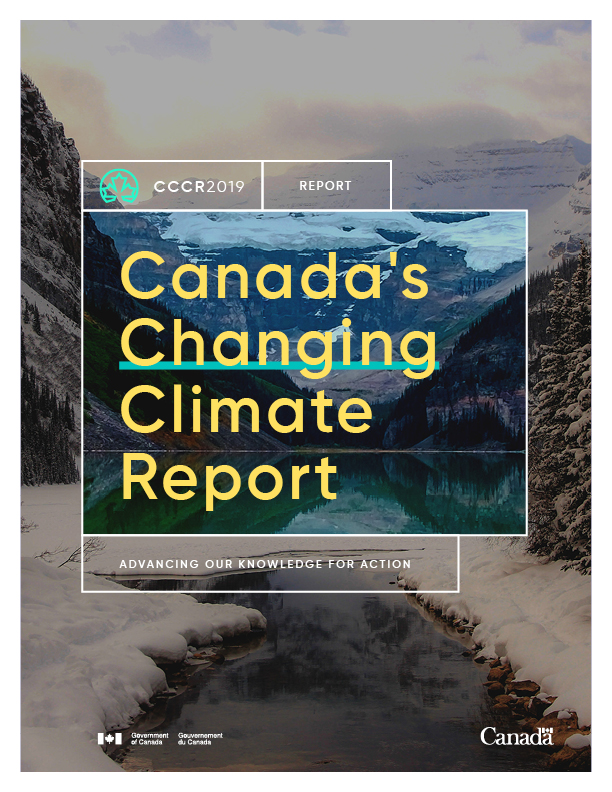Tour Speakers
2020 CMOS TOUR SPEAKERS (see Tour Schedule )
 |
Presentation Topic: Canada's Changing Climate Report Title: Key Findings from Canada's Changing Climate Report Abstract: Canada's Changing Climate Report was released on April 1st, 2019. Led by Environment and Climate Change Canada, this is the first report to be released through the national assessment report series: Canada in a Changing Climate: Advancing our Knowledge for Action. The report provides comprehensive information on how and why Canada's climate has changed, and what changes are projected for the future. This talk will present results from the report on changes across Canada in temperature, precipitation, snow, ice and permafrost, freshwater availability as well as in Canada's three ocean's. Changes in Canada's climate will be considered within the broader context of global-scale changes, with a focus on recent results from the IPCC Special Report on The Ocean and Cryosphere in a Changing Climate. Speakers are: Barrie Bonsal, Elizabeth Bush, Chris Derksen, Greg Flato, Nathan Gillet, Blair Greenan, and Lawrence Mudryk |
Past Tour Speakers
| Year | Name | Topic |
| 2019 | Roberta Hamme Laxmi Sushama |
Ocean Oxygen Cycling from Robotic and Shipboard Observations Climate-Engineering Dialogue in the Context of Arctic Engineering Systems |
| 2018 | Gilbert Brunet | Toward Seamless Weather and Climate Earth-system Prediction https://collaboration.cmc.ec.gc.ca/science/rpn/pers/pages/brunet_gilbert/en/ |
| 2017 | Richard Dewey | Recent Pacific Anomalies: Oscillations, El Nino, and The Blob |
2016 |
Francis Zwiers Prof. Ronald Stewart |
Changing extremes - is it real, or just imagined? Hazardous Near 0°C Precipitation |
2015 |
Kumiko Azetsu-Scott |
About 1/4 of carbon dioxide (CO2) released by human activities to the atmosphere since the start of the Industrial Revolution in the 1800s has been taken up by the oceans An overview of the oceanographic component of the World Class Tanker Safety Initiative ( Link to the presentation given at CMC Dorval. (Windows and Mac)) |
| 2014 | Tom McElroy | Ozone Science: From Discovery to Recovery - and Beyond |
| 2013 | Denis Gilbert | Oceans and Climate Change / Océans et |
| 2012 | Eyad Atallah | Where's the rain? A talk on the connection between tropical cyclones in the North Pacific and drought in Western Canada |
| 2011 | Thomas F. Pedersen | Climate Change and the Pacific Institute for Climate Solutions: Blending Science, Social Science, Politics and Opportunity |
| 2010 | Jim Drummond | Our PEARL Near the Pole: Atmospheric Research at 80oN |
| 2009 | Ken Denman | Climate Change: a Collision of Science, Politics, Economics and Ethics / Le |
| 2007-2008 | Ed Hudson | Arctic Weather / Le Temps |
| 2006-2007 | Fraser J.M. Davidson & Dan Wright * | Ocean Forecasts for Canadians: Improving safety at sea through prediction of ocean behaviour |
| 2005-2006 | Phil Chadwick | |
| 2005 | Maurice Levasseur | Testing the Iron-DMS-Climate Connection in the Subarctic Pacific / Tester la relation |
| 2004 | M.A. Jenkins | Coupled Wildfire-atmosphere Modelling / Modélisation couplée |
| 2003 | Geoff L. Holland | The Challenges, Past, Present and Future of Ocean Observing Systems |
| 2002 | Michel Jean | Non-traditional Applications of Meteorological Modelling |
| 2001 | Howard J. Freeland | Argo Armada - a Global Array of Profiling Floats |
| 2000 | Robert S. Schemenauer | Fog and Fog Collection - Exploring this Hidden Water Resource |
| 1999 | Greg Flato | The Cryosphere and Climate Change |
| 1998 | Natalie Gauthier | The |
| 1996-1997 | William Hsieh | Neural Networks for Short-Term Climate Prediction |
| 1995-1996 | Ambury Stuart | How to Establish a Small Scientific Consulting Business |
| 1994-1995 | J.R.N. Lazier | The North Atlantic Oscillation versus the Cold Fresh Fishless Labrador Sea |
| 1993 | A. Staniforth | Numerical Forecasting of the Atmosphere |
| 1992 | Jim Gower | Satellite Images - Where are we after 20 years? |
| 1991 | J.-P. Blanchet | Global Climate Modelling |
| 1990 | M.I. El-Sabh * | The International Decade for Natural Hazard Reduction - A Challenge for Canadian Meteorologists and Oceanographers |
| 1989 | David Phillips Peter Zwack * |
Canadian Weather Legends - Facts, Fallacies and Fables |
| 1988 | Trevor Platt | The Role of Marine Plant Life |
| 1987 | M. Khandekar - W. Canada L.A. Mysak - E. Canada |
Asian Monsoon Droughts and Floods Ocean Wave Modelling |
| 1986 | D. Farmer | Uses of Acoustic Techniques in Meteorology and Oceanography |
| 1985 | R. Portelli, B. Weisman | |
| 1984 | Warren L. Godson * | Diagnosis and Prognosis of Atmospheric Science Controversies |
| 1983 | R.O. Ramseier * | Passive Microwave Remote Sensing of Sea Ice |
| 1982 | P.A. Taylor | Wind Power in Canada - Some Meteorological Aspects |
| 1981 | G.L. Austin, W.J. Emery | |
| 1980 | M. Glanz | |
| 1979 | A. Fraser | |
| 1978 | D.S. Davison | |
| 1976 | J. Maybank * | |
| 1975 | P.E. Merilees * | |
| 1974 | A.G. Davenport | |
| 1973 | W.R. Frisken | |
| 1972 | M.B. |
|
| 1971 | F.K. Hare * | |
| 1970 | T.R. Oke | |
| 1969 | K.M. King |
* = Deceased
Note: For many years these Tour Speakers were supported by AES and DFO.
